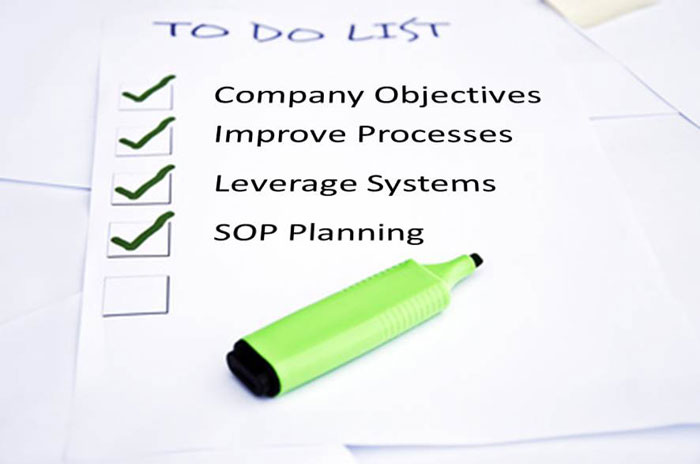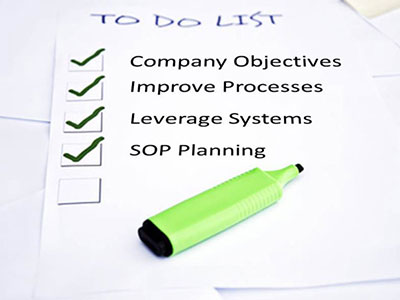 To achieve significant progress on new organizational processes or systems tackle the fundamental to do list first: understand your current processes to figure out where the opportunities for improvement and systems leverage lie.
To achieve significant progress on new organizational processes or systems tackle the fundamental to do list first: understand your current processes to figure out where the opportunities for improvement and systems leverage lie.
When I talk about The Manufacturing Connector(SM), I am referring to the comprehensive process to connect the rapid assessment and identification of key priorities with the execution of results through the right combination of end-to-end supply chain expertise and improvements in people, processes and systems.
When going into additional depth on processes and systems (The Systems Pragmatist), I find that these are fundamental to delivering bottom line business results. Those clients who want to skip over the “hard work” of defining and improving processes and leveraging systems are destined to failure whereas those who take the time to ensure that these bedrock concepts are in place thrive.
Undoubtedly, I find the key to success to be in connection points. Is your process documented? It’s amazing how often clients should start here. By understanding your current process, opportunities for improvement jump out! Do your processes connect with your system? Are your employees trained on how to optimize system processes? How should you handle mistakes in your system? Are there ways to further leverage your system to achieve results? Do you have the right system for your critical business requirements? Perhaps you better take a step back – what are your critical system requirements? If you are upgrading or implementing, have you thought through your critical path tasks? Which are vital to the core functions of your organization? Have you thought through your connection points with your employees, customers, suppliers, related systems, etc.? Do your employees have expertise in project management? And the list goes on….
My best clients understand the value and importance of tying your processes and systems to your objectives. For example, Sales & Operations Planning (S&OP / SIOP) is a system-wide process that ties the entire organization together, and to a great extent even customers, suppliers and other partners, on one plan. Of course, no S&OP program is succsesful unless this plan contains the “right” content (the priority end-to-end supply chain topics such as demand forecasting and capacity planning), the “right” people (starting with the executive team and expanding from there), and the “right” systems (inclusive of ERP, business intelligence/ reporting, e-commerce, etc.). When these all come together, results follow. For example, in one client we increased service levels from around 60% to the high 90%’s while improving margins by 10%.
Don’t undervalue your processes and miss vast opportunities. Instead, force yourself and your executive team to pay attention to what might seem mundane yet will propel your company to success.



